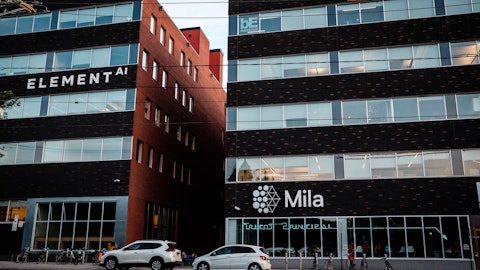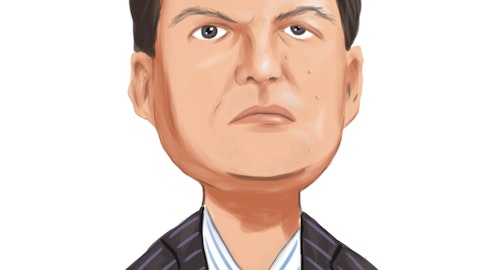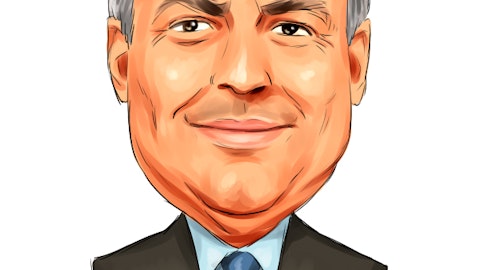3. The Kraft Heinz Company (NASDAQ: KHC)
Number of Hedge Fund Holders: 33
Dividend Yield: 3.62%
The Kraft Heinz Company (NASDAQ: KHC) is an Illinois-based food company founded in 1869. It is ranked third on our list of 10 best dividend stocks to buy according to Michael Burry. Kraft stock has returned more than 43% to investors over the course of the past twelve months. Scion Asset Management holds more than 1.1 million shares in the food company worth over $46 million, representing close to 3.5% of their portfolio. Some of the famous brands owned by the firm include Kool-Aid, Jell-O, ABC, Master, Golden Circle, and Quero, among others.
The Kraft Heinz Company (NASDAQ: KHC) has paid a regular and healthy dividend for years. On April 29, the firm declared a quarterly dividend of $0.40 per share, in line with previous and payable to shareholders by the end of June.
Out of the hedge funds being tracked by Insider Monkey, Nebraska-based firm Berkshire Hathaway is a leading shareholder in The Kraft Heinz Company (NASDAQ: KHC) with 325 million shares worth more than $13 billion.
Just like Facebook, Inc. (NASDAQ: FB) and Alphabet Inc. (NASDAQ: GOOG), The Kraft Heinz Company (NASDAQ: KHC) is one of the best stocks to buy according to Michael Burry.
In its Q4 2020 investor letter, Berkshire Hathaway, the asset management firm, highlighted a few stocks and The Kraft Heinz Company (NASDAQ: KHC) was one of them. Here is what the fund said:
“We exclude our Kraft Heinz holding — 325,442,152 shares — (In the list of 15 common stock investments that at yearend were our largest in market value) because Berkshire is part of a control group and therefore must account for that investment using the “equity” method. On its balance sheet, Berkshire carries the Kraft Heinz holding at a GAAP figure of $13.3 billion, an amount that represents Berkshire’s share of the audited net worth of Kraft Heinz on December 31, 2020.
Berkshire and its subsidiaries hold investments in certain businesses that are accounted for pursuant to the equity method. Currently, the most significant of these is our investment in the common stock of The Kraft Heinz Company (“Kraft Heinz”). Kraft Heinz is one of the world’s largest manufacturers and marketers of food and beverage products, including condiments and sauces, cheese and dairy, meals, meats, refreshment beverages, coffee and other grocery products. Berkshire currently owns 325,442,152 shares of Kraft Heinz common stock representing 26.6% of the outstanding shares.
We recorded equity method earnings from our investment in The Kraft Heinz Company (NASDAQ: KHC) of $95 million in 2020, $493 million in 2019 and losses of approximately $2.7 billion in 2018. Equity method earnings (losses) included the effects of goodwill and identifiable intangible asset impairment charges recorded by Kraft Heinz. Our share of such charges was approximately $850 million in 2020, $450 million in 2019 and $3.7 billion in 2018. We received dividends from Kraft Heinz of $521 million in each of 2020 and 2019 and $814 million in 2018, which we recorded as reductions in our carrying value.
Shares of Kraft Heinz common stock are publicly-traded and the fair value of our investment was approximately $11.3 billion at December 31, 2020 and $10.5 billion at December 31, 2019. The carrying value of our investment was approximately $13.3 billion at December 31, 2020 and $13.8 billion at December 31, 2019. As of December 31, 2020, the carrying value of our investment exceeded the fair value based on the quoted market price by $2.0 billion (15% of carrying value). In light of this fact, we evaluated our investment in Kraft Heinz for impairment. We utilize no bright-line tests in such evaluations. Based on the available facts and information regarding the operating results of Kraft Heinz, our ability and intent to hold the investment until recovery, the relative amount of the decline and the length of time that fair value was less than carrying value, we concluded that recognition of an impairment loss in earnings was not required. However, we will continue to monitor this investment and it is possible that an impairment loss will be recorded in earnings in a future period based on changes in facts and circumstances or intentions.”





